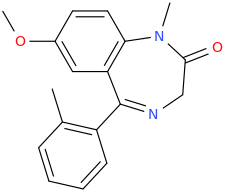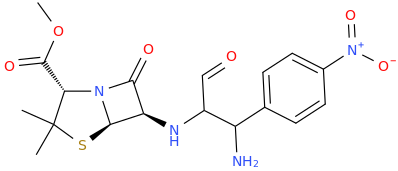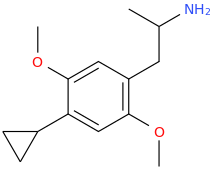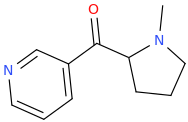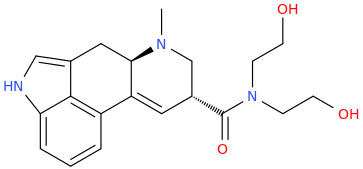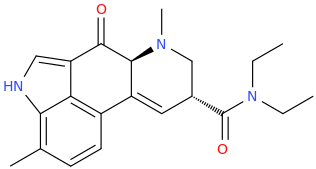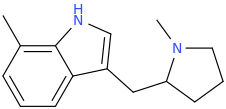-
N&PD Moderators: Skorpio | thegreenhand
-
Neuroscience & Pharmacology Discussion Welcome Guest
Posting Rules Bluelight Rules Recent Journal Articles Chemistry Mega-Thread FREE Chemistry Databases! Self-Education Guide
You are using an out of date browser. It may not display this or other websites correctly.
You should upgrade or use an alternative browser.
You should upgrade or use an alternative browser.
Ketamine salts solubility
- Thread starter fastandbulbous
- Start date
- Status
- Not open for further replies.
AlsoTapered
Bluelighter
- Joined
- Apr 1, 2023
- Messages
- 3,076
I am informed that somebody has found a way to use the above that does not proceed by concerting it into PMK first. I've spent a year looking. Anyone found it yet?
polymath
Bluelight Crew
- Joined
- Nov 4, 2010
- Messages
- 1,884
In another thread, I mentioned the possibility that the doubling of brain kynurenic acid levels by high doses of L-tryptophan (5 g/day) could possibly potentiate the effect of dissociatives, as kynurenate blocks the glycine binding site on NMDA receptors. Looking at some publications, it also seems that COX-1 inhibitors such as aspirin and paracetamol (acetaminophen) cause a similar increase in brain kynurenic acid concentration. In this article, this has been tested in rats with indomethacin. NMDAr glycine site blockers are also known to cause an anxiolytic effect, and this is also seen with paracetamol and aspirin, which makes me suspect that this effect of NSAIDs could be caused by them affecting metabolic kynurenate production. The anti-anxiety effect of paracetamol is usually attributed to its influence on endocannabinoid metabolism, but the kynurenic acid pathway could also be a factor in this. The possibility of aspirin or paracetamol potentiating the effect of ketamine, PCP and other dissociatives is somewhat significant, because someone could easily take that combination without knowing that there can be a synergistic effect.
Curiously, the non-steroidal anti-inflammatory drug indomethacin has also caused psychotic symptoms to some people, as have some other drugs of that class as well, and it wouldn't be surprising if this is caused by it affecting the NMDA receptor.
Edit: looks like there is this thread on BL about HA-966, which is an NMDA glycine site blocker or partial agonist.
Curiously, the non-steroidal anti-inflammatory drug indomethacin has also caused psychotic symptoms to some people, as have some other drugs of that class as well, and it wouldn't be surprising if this is caused by it affecting the NMDA receptor.
Edit: looks like there is this thread on BL about HA-966, which is an NMDA glycine site blocker or partial agonist.
Last edited:
Gaffy
Bluelighter
- Joined
- Oct 27, 2018
- Messages
- 1,210
Neuropeptide FF 1 & 2 , off my own works. Worth trillions in advance.
 swisstargetprediction.ch
swisstargetprediction.ch
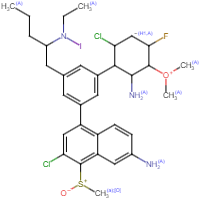
@sekio @SantaClaus
The best GaffyRC's has to offer.
SwissTargetPrediction

@sekio @SantaClaus
The best GaffyRC's has to offer.
AlsoTapered
Bluelighter
- Joined
- Apr 1, 2023
- Messages
- 3,076
Won't those formal charges ensure it's going to be unstable? Like instantly?
AlsoTapered
Bluelighter
- Joined
- Apr 1, 2023
- Messages
- 3,076
OxyNeoetorphine codone …oxy and etorphine mash up
Won't be very potent - the 6 methoxy interacts with the -OH. MAYBE that O-methyl moves between the two spots?
N-CF3?
Won't ionize.
LucidSDreamr
Bluelighter
- Joined
- May 23, 2013
- Messages
- 7,334
don’t need to ionize opioids to use them. See No. 3 heroinWon't ionize.
AlsoTapered
Bluelighter
- Joined
- Apr 1, 2023
- Messages
- 3,076
Won't be very potent - the 6 methoxy interacts with the -OH on that side-chain. MAYBE that O-methyl moves between the two spots?
N-CF3?
Won't ionize.
Why has nobody suggested an N-phenylethyl or homologue. I've posted a link to the hundreds of levophhanol analouges made and tested. The N-phenylethyl was x80M, the N-2-(2-thienyl)ethyl x240M and N-2-(2-furanyl)ethyl x480M.
don’t need to ionize opioids to use them. See No. 3 heroin
The RECEPTOR requires a positively ionizable function - I've posted multiple papers on this.
LucidSDreamr
Bluelighter
- Joined
- May 23, 2013
- Messages
- 7,334
Sorry I don’t read every paper you post on BL. Please forgive me.Why has nobody suggested an N-phenylethyl or homologue. I've posted a link to the hundreds of levophhanol analouges made and tested. The N-phenylethyl was x80M, the N-2-(2-thienyl)ethyl x240M and N-2-(2-furanyl)ethyl x480M.
The RECEPTOR requires a positively ionizable function - I've posted multiple papers on this.
I was stoned off my ass and made up chemdraw structures without reading shit about SAR.
Last edited:
AlsoTapered
Bluelighter
- Joined
- Apr 1, 2023
- Messages
- 3,076
But lets go through it as I did, beginning with the patent.
US 3904641 - Triazolothienodiazepine compounds by Michio Nakanishi, Tetsuya, Tahara Kazuhiko Araki & Masami Shiroki
When you have read, understood and digested that, we shall proceed. Because I'm 100% going to ensure you do the work I did.
US 3904641 - Triazolothienodiazepine compounds by Michio Nakanishi, Tetsuya, Tahara Kazuhiko Araki & Masami Shiroki
When you have read, understood and digested that, we shall proceed. Because I'm 100% going to ensure you do the work I did.
AlsoTapered
Bluelighter
- Joined
- Apr 1, 2023
- Messages
- 3,076
I don't use drugs other than those prescribed by my doctor. I'm not addicted to them although they do both produce a defined abstinence syndrome. I don't drink alcohol although I do smoke tobacco occasionally.
BUT having spent 8 years of higher education in the subject and now being severely disables does mean I have a huge amount of time to expend.
BUT having spent 8 years of higher education in the subject and now being severely disables does mean I have a huge amount of time to expend.
- Status
- Not open for further replies.

